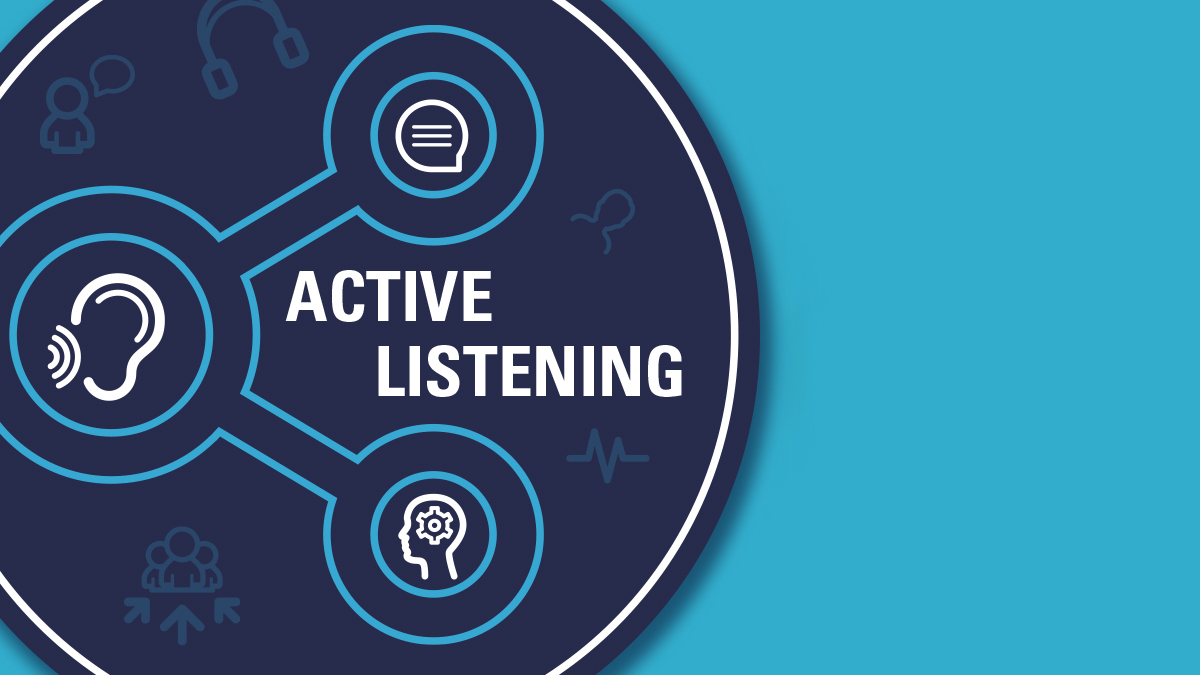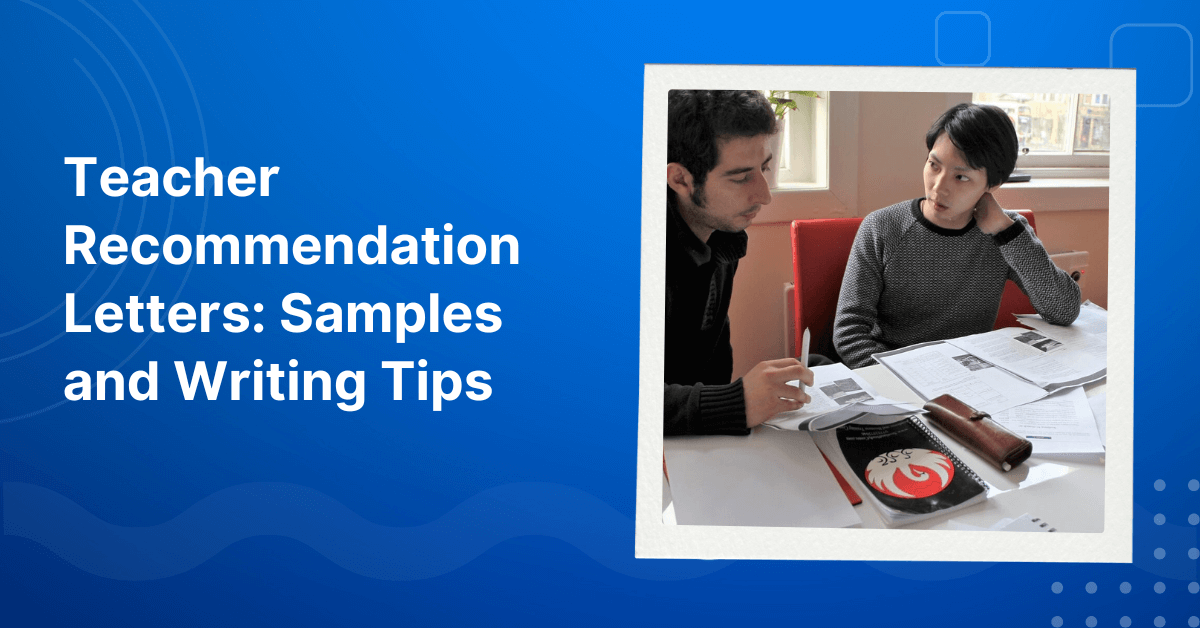In today’s fast-paced world, effective communication is more important than ever. One crucial aspect of communication that often goes overlooked is active listening. Active listening skills involve not just hearing the words someone is saying but fully engaging with them, understanding their message, and providing appropriate responses. In this article, VTJ will discuss what active listening is, its benefits, and how to develop and practice this essential skill.
>>>Read more: 20+ Common teaching job interview questions & answers in Vietnam
>>>Read more: 40+ ESL Teacher Interview Questions & Answers
What Is Active Listening?

What Is Active Listening?
Active listening skills are communication techniques that require the listener’s full concentration, comprehension, and response. It goes beyond merely hearing the words and involves making an effort to understand the speaker’s perspective, emotions, and intentions. By actively listening, you create a supportive and respectful environment that fosters open dialogue and trust between individuals.
>>>Read more: Teacher Burnout: Causes, Signs, and How to Avoid It
>>>Read more: 20+ Effective Classroom Management Strategies and Techniques
The Benefits of Active Listening. Why Is Active Listening Important?

The Benefits of Active Listening. Why Is Active Listening Important?
Active listening skills offer several benefits and play a crucial role in effective communication. Let’s explore the importance of active listening in more detail:
Build connections
Active listening plays a crucial role in building connections between individuals. When you actively listen to someone, you are demonstrating genuine interest in their thoughts and feelings. This level of attentiveness and engagement fosters a sense of respect and appreciation, making the speaker feel valued and heard. As a result, the person is more likely to open up and share their ideas, experiences, and concerns. Building connections through active listening strengthens relationships, whether in personal friendships, romantic partnerships, or professional collaborations.
>>>Read more: 40+ Preschool Teacher Interview Questions (+Answers)
Develop trust
Trust is the foundation of any successful relationship, and active listening is a key factor in building and maintaining trust. When you actively listen to others, they feel acknowledged and understood, which enhances their confidence in your sincerity and integrity. This trust creates a safe environment for open and honest communication. As trust grows, people become more willing to share their thoughts, leading to deeper and more meaningful connections.
>>>Read more: Practical Tips to Deal with Negative Teacher
Identify and solve problems
Active listening skills enable you to grasp the core issues and concerns of the speaker accurately. By paying close attention to the details and emotions conveyed, you can identify underlying problems or challenges that may not be explicitly stated. Understanding these issues is vital for effective problem-solving and conflict resolution. When you actively listen, you can offer relevant and thoughtful solutions, demonstrating your willingness to support and help the speaker.
>>>Read more: 15+ Ways to build confidence in your ESL students
Increase your understanding of various topics
Engaging in active listening exposes you to diverse perspectives and knowledge on various topics. By fully immersing yourself in the speaker’s ideas and experiences, you expand your understanding of different viewpoints and ways of thinking. This continuous learning process broadens your horizons and allows you to gain insights into subjects you might not have explored otherwise. Increased understanding through active listening promotes open-mindedness and empathy, making you a more well-rounded and informed individual.
>>>Read more: 14 Types of teaching methods for an effective lesson
Avoid missing critical information
In many conversations, critical information may be conveyed indirectly or embedded within the speaker’s message. By practicing active listening skills, you can catch every detail and nuance, ensuring that you don’t miss essential information. Whether in academic, professional, or personal contexts, being attentive and focused helps you make informed decisions, respond appropriately, and avoid misunderstandings.
>>>Read more: 21+ Best Classroom Management Books for Teachers
6 Steps for More Effective Active Listening

It is important to follow these six steps to enhance your active listening skills
To become a more effective active listener, it is important to follow these six steps in order to fully engage with the speaker and enhance your listening skills:
Pay attention
The first step in active listening is to give your full attention to the speaker. Eliminate distractions and focus solely on what the speaker is saying. Maintain eye contact, use non-verbal cues to show your attentiveness, and avoid interrupting or thinking about your response while the speaker is talking. By paying close attention, you demonstrate respect and create a conducive environment for effective listening.
>>>Read more: 22+ SMART Teacher Goals Examples in 2023
Withhold judgment
It is crucial to withhold judgment when actively listening. Suspend any preconceived notions or biases you may have and approach the conversation with an open mind. Avoid making assumptions or jumping to conclusions before fully understanding the speaker’s perspective. By setting aside judgment, you create a safe space for the speaker to express themselves freely and honestly.
>>>Read more: How to Teach Critical Thinking Skills to Students
Reflect
Reflection is an essential aspect of active listening. Show that you are actively engaged by reflecting on what the speaker is saying. Repeat or paraphrase their words to confirm your understanding and to let the speaker know that you are actively listening. Reflecting also helps you internalize the information and ensures that you are comprehending the message accurately.
>>>Read more: Guide on How to Teach Vocabulary Effectively for Teachers
Clarify
Seeking clarification is an important step in active listening. If something is unclear or you need more information, don’t hesitate to ask questions. Asking for clarification demonstrates your commitment to understanding the speaker’s message accurately. It also shows that you value their input and want to ensure clear communication. By seeking clarification, you can avoid misunderstandings and ensure that you have a complete understanding of the speaker’s thoughts and ideas.
>>>Read more: How To Write a Curriculum in 8 Steps: A Complete Guide
Summarize
Summarizing is a powerful tool in active listening. After the speaker has finished sharing their thoughts, summarize the main points of the conversation. This step not only helps you confirm your understanding but also allows the speaker to feel heard and acknowledged. Summarizing shows that you have actively listened and processed the information, and it provides an opportunity for the speaker to clarify any misunderstandings or add further details.
>>>Read more: 4 Types of Learning Styles: How to Use VARK Model in Teaching
Active listening is not just about receiving information; it also involves active participation. Engage in the conversation by sharing your thoughts, ideas, or experiences related to the topic. However, it is important to ensure that your sharing complements the speaker’s message and promotes further understanding, rather than diverting the conversation away from their point. Sharing your perspective demonstrates that you are actively involved and encourages a two-way dialogue.
>>>Read more: How To Write a Lesson Plan in 6 Steps: The Complete Guide
Active Listening Skills to Practice
Active Listening Skills to Practice
Verbal Active Listening Skills
Paraphrase
Paraphrasing is an essential technique in active listening that involves restating the speaker’s words or main ideas in your own words. By summarizing what the speaker said and feeding it back to them, you confirm your understanding of their message. It allows the speaker to verify if their thoughts were accurately conveyed and provides an opportunity to clarify any misunderstandings. Moreover, paraphrasing shows genuine interest in the speaker’s perspective and encourages them to elaborate further on their ideas.
>>>Read more: What is Independent Learning and How It Works: A teacher’s guide
Ask Open-Ended Questions
Asking open-ended questions is a powerful way to stimulate deeper and more meaningful conversations. These questions cannot be answered with a simple “yes” or “no” and prompt the speaker to provide thoughtful and detailed responses. Open-ended questions demonstrate your curiosity and eagerness to learn more about the speaker’s viewpoint. They encourage the speaker to express their thoughts, feelings, and experiences in greater detail, promoting a more engaging and enriching dialogue.
>>>Read more: 13 Types of Students in the Classroom and How to Deal with Them
Ask Specific Probing Questions
Probing questions are targeted inquiries that seek to delve into specific aspects of the speaker’s message. These questions help uncover underlying motivations, reasons, or causes behind the speaker’s statements. When used with sensitivity and respect, probing questions can lead to a deeper understanding of complex issues and foster a sense of trust between the speaker and listener. They show that you are genuinely interested in grasping the nuances of the speaker’s perspective.
>>>Read more: What Is Inquiry-Based Learning (IBL)? Types, Benefits & How to Use
Use Short Verbal Affirmations
Verbal affirmations are brief responses that indicate your active involvement in the conversation. Phrases like “I see,” “I understand,” “Absolutely,” or “Sure” convey that you are attentively following the speaker’s words. These affirmations provide positive reinforcement and reassure the speaker that their message is being heard and valued. They create a supportive and encouraging atmosphere, making the speaker feel more comfortable sharing their thoughts and emotions.
>>>Read more: How to Teach Writing Skills to Students Effectively in 8 Simple Steps
Display Empathy
Empathy is a critical aspect of active listening, and it involves understanding and sharing the feelings of another person. To display empathy, acknowledge the speaker’s emotions and experiences in a non-judgmental manner. Use phrases such as “That must have been difficult for you” or “I can imagine how that made you feel.” By showing empathy, you create a safe space for the speaker to express themselves honestly and openly, fostering a stronger connection between both parties.
>>>Read more: 10+ Strategies of How to Teach Reading Comprehension in the Class
When appropriate, sharing your own experiences that relate to the speaker’s topic can enhance the conversation. It can make the speaker feel understood and less alone in their experiences, promoting a sense of camaraderie. However, be mindful not to dominate the conversation with your own stories; the focus should remain on the speaker. Sharing similar experiences should be done with sensitivity and humility, recognizing that everyone’s experiences are unique.
>>>Read more: 5 Types of Teaching Styles (Their Pros & Cons)
Demonstrate your attentiveness by referencing information shared earlier in the conversation. This shows that you are actively listening and genuinely interested in what the speaker has to say. By recalling previous details or ideas, you emphasize the value of the speaker’s input and create a sense of continuity in the conversation. It also helps to reinforce the importance of their contributions and facilitates a deeper exploration of the topic.
Non-Verbal Active Listening Skills
Nod
Nodding is a simple yet effective non-verbal cue that conveys agreement, understanding, or encouragement. It lets the speaker know that you are actively engaged and accepting of their message. Nodding can provide positive feedback to the speaker and encourage them to continue sharing their thoughts and feelings.
Smile
A warm and genuine smile can significantly impact the tone of a conversation. Smiling creates a positive and welcoming atmosphere, making the speaker feel more comfortable and at ease. It also demonstrates that you are approachable and receptive to what the speaker is saying, further fostering open communication.
>>>Read more: Why Students Get Bored & How to Engage Bored Students in the Class
Avoid Distracting Movements
To be an effective active listener, it’s crucial to minimize any distracting movements or behaviors. Actions like fidgeting, tapping, or constantly looking around can divert the speaker’s attention and indicate disinterest. Maintaining a still and focused posture shows respect for the speaker and their message.
Maintain Eye Contact
Maintaining appropriate eye contact during a conversation is a fundamental aspect of active listening. It shows that you are fully present and attentive to the speaker’s words. Eye contact helps establish a connection and conveys sincerity, trustworthiness, and respect. However, be mindful not to stare excessively, as this may make the speaker uncomfortable; instead, strike a balance between
Active listening is an invaluable skill that can significantly improve your communication and relationships. By employing the techniques and examples outlined in this article, you can become a more effective and empathetic listener. Whether in personal or professional interactions, mastering active listening skills will lead to more meaningful connections and better overall understanding of those around you.
FAQ
What are the four 4 basic active listening skills?
Four basic active listening skills are: Paraphrasing, Asking open-ended questions, Providing verbal affirmations, Displaying empathy
What is the 5-second rule in active listening strategies?
The 5-second rule in active listening strategies refers to the practice of pausing for five seconds before responding to the speaker. This brief pause allows you to process the speaker’s message fully before formulating your response. It helps ensure that your response is thoughtful, relevant, and considerate of the speaker’s perspective.
Are you facing difficulties in finding and securing teaching positions in Vietnam? Are visa procedures causing you trouble? Feeling overwhelmed and directionless upon your arrival in Vietnam for teaching assignments? Don’t worry, VTJ’s English Teaching Placement in Vietnam (EPIV) Program 2024 provides comprehensive support to solve ALL the matters.
👉👉👉 Click HERE to request free consultation





